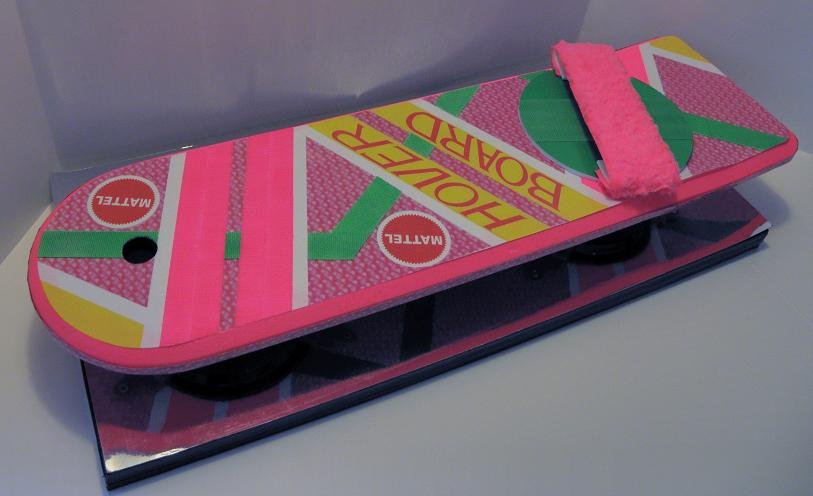
| EDWARD EVERS | Robot Workshop | Hoverboard |
On the bottom of the hoverboard there is one floating disc attached near the front of the hoverboard and one attached near the rear of the hoverboard. The parts attached to the bottom of the hoverboard are actually a thin plactics layer that both hold the discs in place and replicate the look of the hoverboard used in the movie.
Imagine for a moment that you have two flat magnets, one lying south up on a table and the second held by the fingertips of you hands south down. The two magnets will repel each other when brought close together. You can simulate levitation by allowing the magnetic repulsion to determine the height of your magnet and by making tiny adjustments to the magnet you are holding (left-right, forward-backward).
The Crealev levitation pad uses electromagnets, instead of fingers, to accomplish the same levitation effect. The repulsion of the magnets determines the height, and the electromagnets keep the floating disc in place, with tiny adjustments left, right, forward, and backward.

The following materials are needed for this project
| EDWARD EVERS | Robot Workshop | Hoverboard |
Modified 2011-11-01
Copyright © 2000-2011 Edward Evers